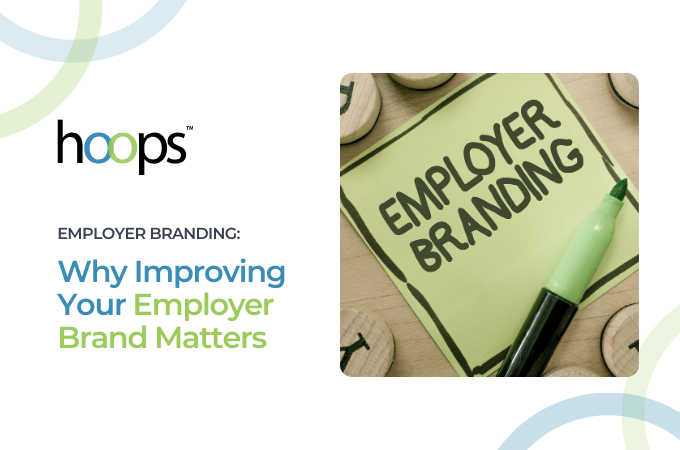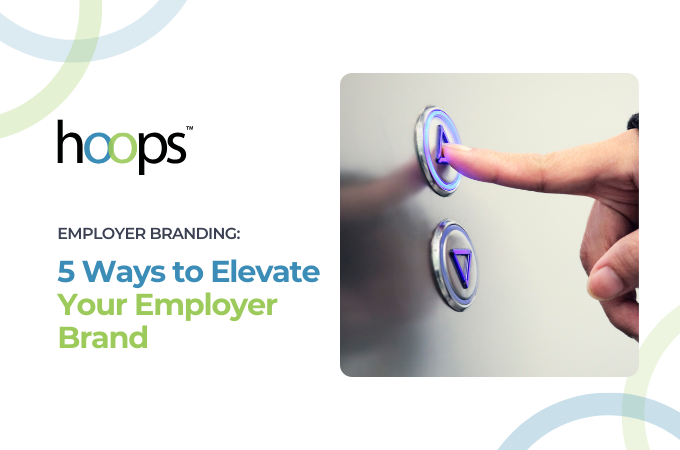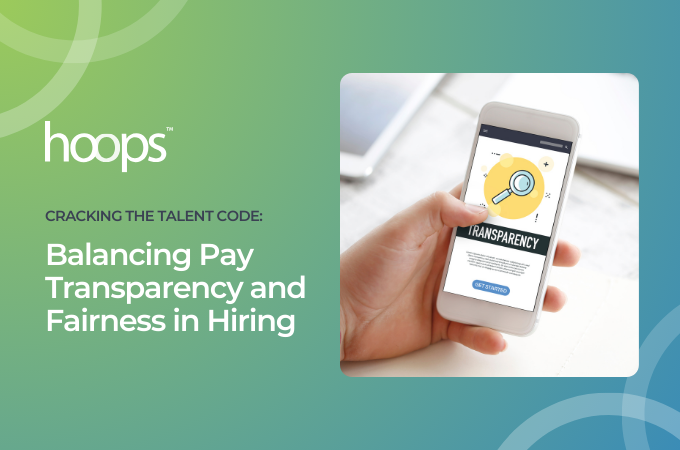An Overview of Employee Engagement and Retention
In the world of business, employee engagement and retention is becoming a hotter topic with each passing month. If you’re new to the concept, what we’re looking at today is the direct connection between “employee engagement” (the emotional commitment an employee has to their work and the organization) and “retention” (how long an employee sticks around before seeking greener pastures).
 “Employee engagement” and “retention” have been part of business plans for a long time, but why the increasing focus on them - both individually and together? Well, for starters, employee engagement and retention can bring about a whole host of benefits. Engaged employees are more productive, creative, and enthusiastic about their work. They also tend to be more loyal and committed to the organization, which can lead to reduced turnover and increased overall performance. This last point is especially important when you’re trying to get a head in a tough labor market.
“Employee engagement” and “retention” have been part of business plans for a long time, but why the increasing focus on them - both individually and together? Well, for starters, employee engagement and retention can bring about a whole host of benefits. Engaged employees are more productive, creative, and enthusiastic about their work. They also tend to be more loyal and committed to the organization, which can lead to reduced turnover and increased overall performance. This last point is especially important when you’re trying to get a head in a tough labor market.
Speaking of turnover, let's chat about the dark side of disengagement and high employee turnover. The cost of replacing employees can be a real drain on your resources (time, money, and energy). Think about recruitment, training, and lost productivity—yikes! Moreover, high turnover can harm your company's reputation and hinder your ability to attract top talent.
So, as an employer or manager, what can you do to make sure your company is building a culture of high employee engagement and retention and low turnover? Let’s get started with some employee engagement best practices.
In today's article:
- Employee engagement best practices
- Employee engagement and performance
- Employee engagement training
- Driving employee engagement
- Employee engagement goals
Employee Engagement Best Practices
A simple Google search will show you nearly countless different recommendations for how to boost your employee engagement and  retention, so we’re going to try a different approach and boil it down to what we think are the 3 key ingredients:
retention, so we’re going to try a different approach and boil it down to what we think are the 3 key ingredients:
- Effective communication and transparency;
- Recognition and rewards for hard work; and
- Opportunities for personal and professional growth.
First up, effective communication and transparency. As an employer, it's essential to put on your listening ears and engage in meaningful conversations with your employees. In fact, Gallup's "2023 Guide to Employee Engagement and Retention" recommends having a quick connect conversation once per week with each team member. This is your chance to check in, see how they're feeling, and keep the lines of communication open. And don't forget about discussing wellbeing at work and setting hybrid work expectations together — because everyone's needs are unique, just like those fancy artisanal donuts in the break room.
Next on our list of employee engagement best practices is recognizing and rewarding hard work. After all, who doesn't like a pat on the back or a high-five for a job well done? It’s also important to take a queue from Chicago’s classic song, Hard To Say I’m Sorry: "Everybody needs a little time away." It's important to identify signs of burnout and help your employees manage their workload. By providing support and acknowledging their efforts, you'll create a positive work environment where your employees feel valued and appreciated.
Last but certainly not least, it’s critical to provide real opportunities for personal and professional growth. Let's face it, nobody wants to feel stuck in a rut. By encouraging employees to apply their strengths to every aspect of their job and having stay conversations with your best people, you'll not only help them grow but also make it less likely they'll jump ship. You can get a long way with this by adopting the often-overlooked approach of encouraging friendships at work. Once thought to be something that negatively impacts productivity, it turns out the opposite is true; having friends at work makes employees more productive, provides personal growth opportunities, and keeps them working with you longer - plus, not much beats bonding over shared memes and office shenanigans.
Speaking of productivity, it’s time to dive into employee engagement and performance!
Employee Engagement and Performance
Now, it’s time to talk more specifically about the relationship between employee engagement and performance, because let’s face it, it’s always easier to get buy-in for business initiatives that lead to increased revenue!
 First stop: the impact of engagement on individual performance. Did you know that engaged employees produce better business outcomes? That's right! They're more likely to be present, focused, and motivated to complete their tasks with flair and finesse. Some say this is common sense, to which I ask “then why isn’t it common in the workplace?” This is one of the easiest outcomes to see, and one of the most impactful on your business.
First stop: the impact of engagement on individual performance. Did you know that engaged employees produce better business outcomes? That's right! They're more likely to be present, focused, and motivated to complete their tasks with flair and finesse. Some say this is common sense, to which I ask “then why isn’t it common in the workplace?” This is one of the easiest outcomes to see, and one of the most impactful on your business.
It isn’t just individual performance that’s affected by strong engagement; employee engagement affects team performance too. You see, when employees are engaged, they create a positive domino effect that extends to their colleagues. As Gallup's research shows, engaged teams experience an 81% decrease in absenteeism and an 18% increase in productivity. They're more collaborative, innovative, and, well, just plain fun to work with! When engagement is high, teams are far more likely to conquer challenges —kind of like the Avengers, but with fewer capes and explosions (for most companies, at least).
Bringing it all together, there’s the link between engagement, productivity, and profitability. Engaged employees don't just make the workplace a more enjoyable place; they also contribute to the bottom line. According to Gallup, organizations with high levels of employee engagement experience a 23% increase in profitability. That's right, folks—engaged employees are like a golden ticket to a more successful and profitable company! And there isn’t a business owner alive who would say no to a 23% profitability boost even if it didn’t have all the other nice side-effects that employee engagement and retention programs have.
By this point, you might be starting to wonder what the best way is to get something like this implemented at your company. Good news! Time to take a look at employee engagement training.
Employee Engagement Training
Like most programs that companies roll out, the program success ultimately depends on the people that have to implement them. In the case of employee engagement and retention programs, those people are your managers.
Did you know that a whopping 70% of the variance in team engagement is determined solely by the manager?
 Indeed, managers play a crucial role in cultivating employee engagement, and it's up to them to create an environment where employees feel motivated and supported. But, alas, many managers lack the skills to make frequent conversations meaningful, so their actions might come across as micromanagement (if they take action at all). That's why it's essential to train leaders to redefine their roles and expectations, provide them with the necessary tools and resources, and help them evaluate performance accurately.
Indeed, managers play a crucial role in cultivating employee engagement, and it's up to them to create an environment where employees feel motivated and supported. But, alas, many managers lack the skills to make frequent conversations meaningful, so their actions might come across as micromanagement (if they take action at all). That's why it's essential to train leaders to redefine their roles and expectations, provide them with the necessary tools and resources, and help them evaluate performance accurately.
Another important aspect of this kind of training is enhancing employee engagement skills. Managers can benefit from programs that address diversity and inclusion, teach them to recognize and appreciate individual contributions, and encourage them to solicit and act on employee opinions. With the right training, managers can transform their teams into engagement powerhouses, boosting collaboration, performance, and overall happiness.
A final note on employee engagement training: the success of these programs often comes down to whether or not your workplace is built on a culture of learning and continuous improvement. A company that fosters a learning culture is more likely to attract and retain engaged employees who feel valued and supported in their personal and professional growth. By investing in ongoing training and development, organizations can create a dynamic, ever-evolving workforce that constantly innovates and adapts to new challenges.
With an employee engagement training program in place, we need to look at driving employee engagement to keep us on the right track.
Driving Employee Engagement
As a business owner or manager, you get a fair bit of flexibility here and - at the end of the day - the most important thing is making sure the way you’re driving employee engagement aligns with what your company is all about. With that said, we’re going cover the importance of aligning company culture with employee values, promoting work-life balance and flexibility, and encouraging employee involvement in decision-making.
 Aligning company culture with employee values flips one of the most common perspectives around a full 180-degrees, which is a big part of why it’s one of the biggest difference-makers. The reality is, every person you hire isn’t going to be 100% aligned with the values of each other or the company (and they shouldn’t be, but that’s a conversation for another post). In spite of this, people crave purpose and meaning from their work, and to truly engage employees, companies must focus on what drives them: purpose, development, and relationships with caring managers. It’s not rocket science, but it does take dedication and commitment across the organization for this to work well.
Aligning company culture with employee values flips one of the most common perspectives around a full 180-degrees, which is a big part of why it’s one of the biggest difference-makers. The reality is, every person you hire isn’t going to be 100% aligned with the values of each other or the company (and they shouldn’t be, but that’s a conversation for another post). In spite of this, people crave purpose and meaning from their work, and to truly engage employees, companies must focus on what drives them: purpose, development, and relationships with caring managers. It’s not rocket science, but it does take dedication and commitment across the organization for this to work well.
Just like employee engagement and retention itself, promoting work-life balance and flexibility has become more than a buzzword since COVID. The ability to balance personal and professional lives is the single most important consideration for most job-seekers. In fact, FlexJobs’ 2022 Career Pulse Survey showed 63% of respondents would choose better work-life balance over better pay. Even pre-COVID, a Joblist survey showed it would take an extra $10,000 per year for the average worker with a good work-life balance to give it up. Companies that offer flexible work arrangements, support employee well-being, and respect their employees' time outside of work will find themselves rewarded with a more engaged and committed workforce.
The last point here is often the biggest hurdle for businesses to clear: encouraging employee involvement in decision-making. Employees want to have a voice and be involved in decisions that affect their work. By fostering a culture of openness and collaboration, organizations can empower their employees to contribute their unique ideas and perspectives, leading to increased engagement, innovation, and overall success.
Lastly, let’s talk about employee engagement goals.
Employee Engagement Goals
Here, we'll discuss setting achievable and meaningful engagement goals, measuring and tracking progress, and adapting engagement strategies based on feedback and results to make sure your new employee engagement and retention strategy experiences all the benefits we’ve discussed so far.
First, let's look at setting achievable and meaningful engagement goals. Managers must define and discuss each employee's expectations, helping them recognize how their work contributes to the organization's success. Equipping your crew with the proper tools and resources is an easy-to-say-hard-to-do aspect of this whole process, but it has to happen!
 Next, the importance of measuring and tracking engagement progress. By using Gallup's 12 elements of employee engagement, managers can create a structure for interactions with employees and monitor their engagement levels. Stay the course and use these metrics to steer your ship towards engagement greatness!
Next, the importance of measuring and tracking engagement progress. By using Gallup's 12 elements of employee engagement, managers can create a structure for interactions with employees and monitor their engagement levels. Stay the course and use these metrics to steer your ship towards engagement greatness!
Lastly and most importantly: you won’t find success with any of this without actively adapting engagement strategies based on feedback and results. Listen closely to the whispers of the wind (employee feedback) and adjust your sails (engagement strategies) accordingly. By aligning work with team members' talents and strengths, you'll harness the power of the engagement kraken and propel your organization to new heights!
If you’re looking for help with finding and retaining the right talent for your organization, click the button below to connect with Hoops HR and find out how they help companies build talented, highly-engaged teams.







